Occasionally I rerun a favorite older post. This one was published nearly eight years ago, in August of 2016. For this version I’ve edited the text, tweaked the formatting and changed the title.
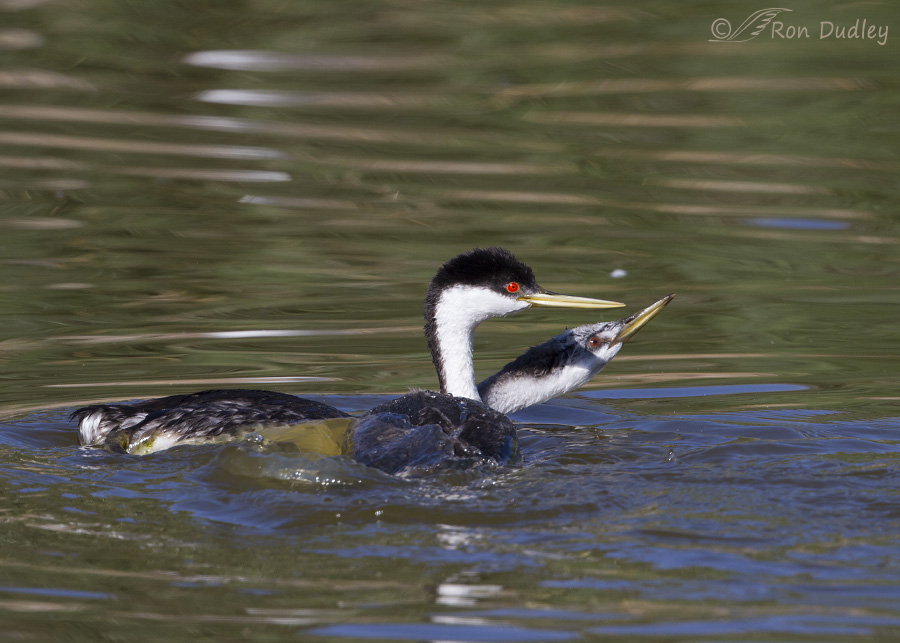
1/2000, f/6.3, ISO 400, Canon 7D, Canon EF 500mm f/4L IS II USM + 1.4 tc, not baited, set up or called in
First, the optical illusion. These are both Western Grebes. The bird with the bright red eye is an adult parent of the juvenile with the grayish head. The younger bird is almost full-grown and just about the same size as its parent.
Please study the image for a few moments and decide what you’re seeing. Or what you think you’re seeing.
When I first saw this photo on my computer screen, my brain decided that the adult has its back to the viewer and is swimming away from us and directly into the outstretched neck of the juvenile, whose body we see lengthwise in the water. It wasn’t until I studied the rest of the series that I realized that I had it bass-ackward.
Following are photos that were taken before this one, and after.
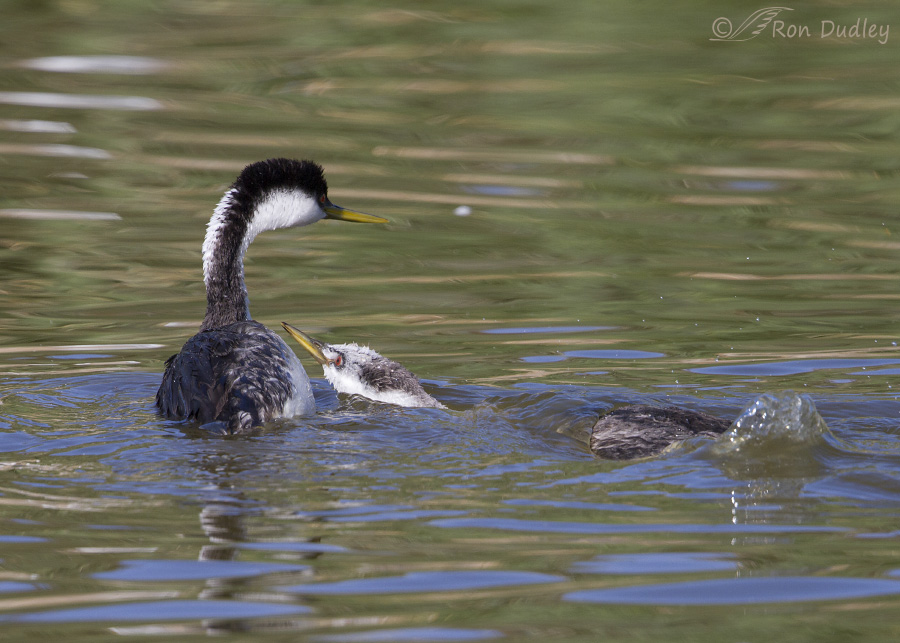
1/2000, f/6.3, ISO 400, Canon 7D, Canon EF 500mm f/4L IS II USM + 1.4 tc, not baited, set up or called in
A few seconds earlier the juvenile swam up to the adult…
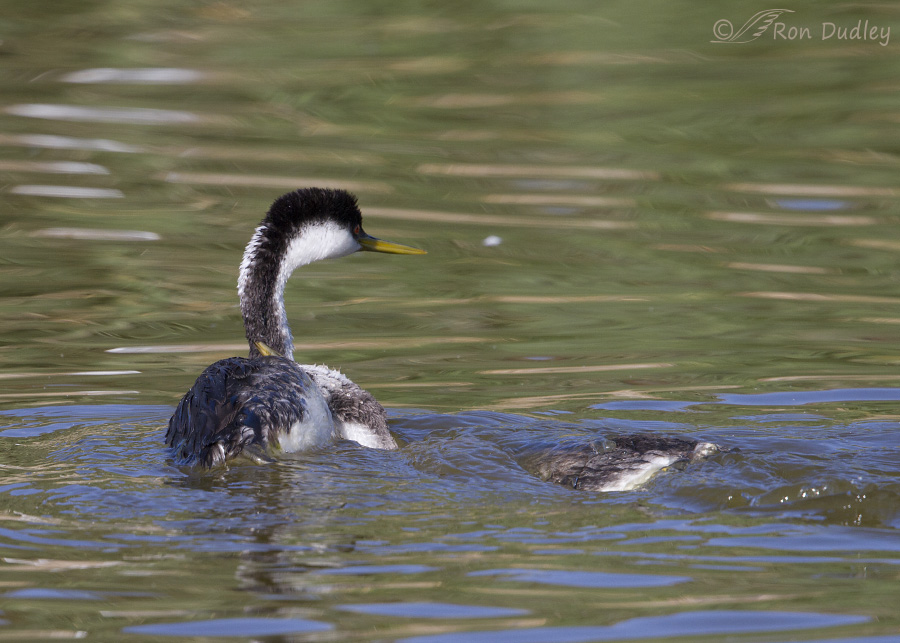
1/2000, f/6.3, ISO 400, Canon 7D, Canon EF 500mm f/4L IS II USM + 1.4 tc, not baited, set up or called in
and began to slide its head over the crook of the neck of its parent.
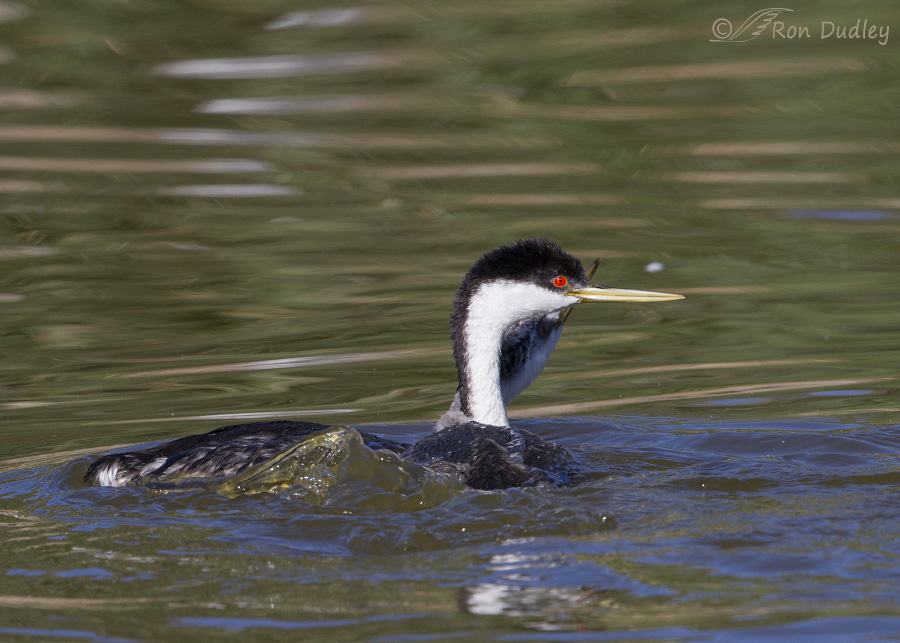
1/2000, f/6.3, ISO 400, Canon 7D, Canon EF 500mm f/4L IS II USM + 1.4 tc, not baited, set up or called in
As both birds turned to my right in the water, the youngster continued to swim forward…

1/2000, f/6.3, ISO 400, Canon 7D, Canon EF 500mm f/4L IS II USM + 1.4 tc, not baited, set up or called in
and bend its long neck to the right, which wrapped its neck around the base of the adult’s neck.
This is the image I presented first. Now it should be clear that what I thought I saw in the first image was really an illusion. The body to the left actually belongs to the red-eyed adult and not to the juvenile.
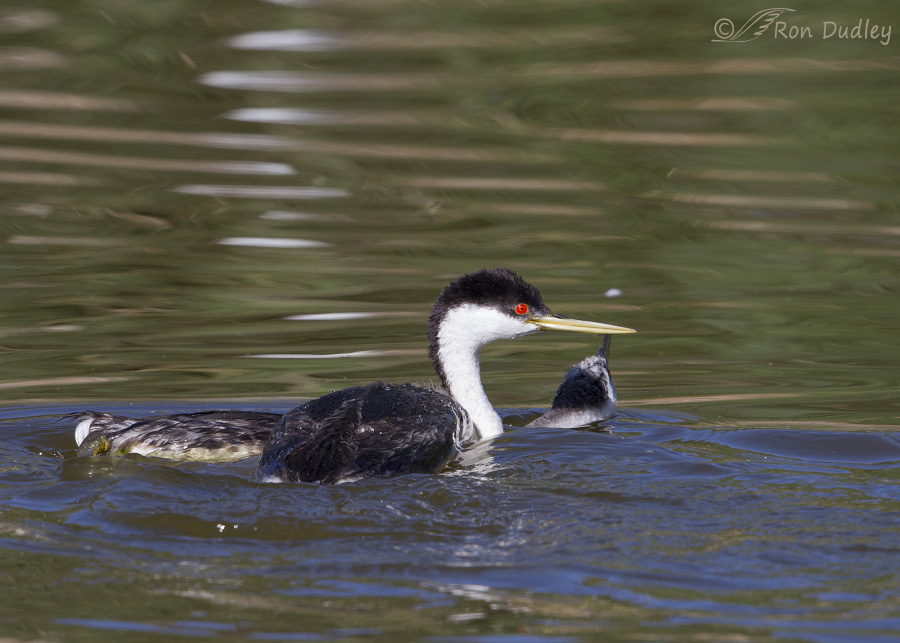
1/2000, f/6.3, ISO 400, Canon 7D, Canon EF 500mm f/4L IS II USM + 1.4 tc, not baited, set up or called in
As the juvenile continued to push forward, its body began to slither over the top of the lower neck of the adult.
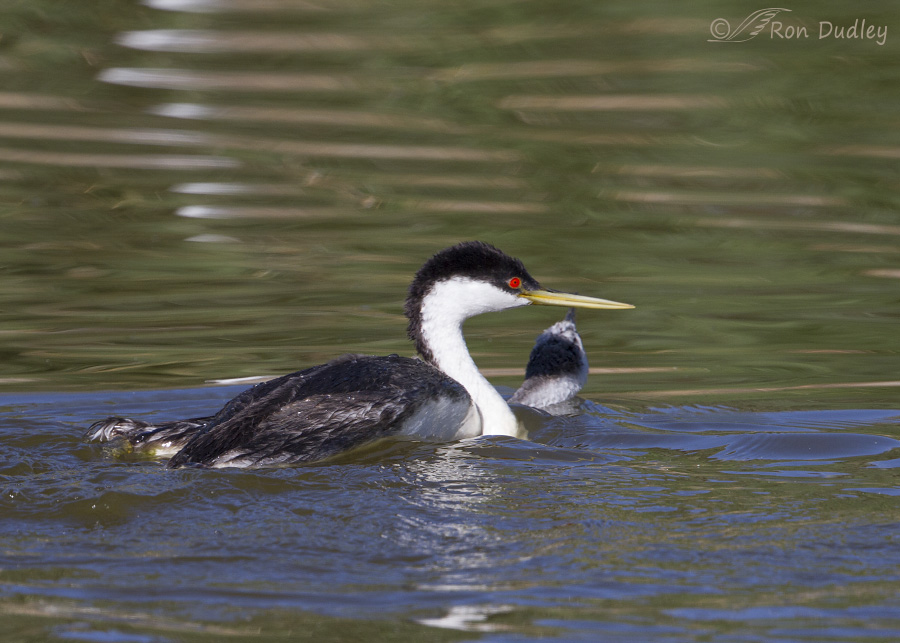
1/2000, f/6.3, ISO 400, Canon 7D, Canon EF 500mm f/4L IS II USM + 1.4 tc, not baited, set up or called in
The youngster appeared to deliberately attempt to place its body lengthwise on top of its parent.
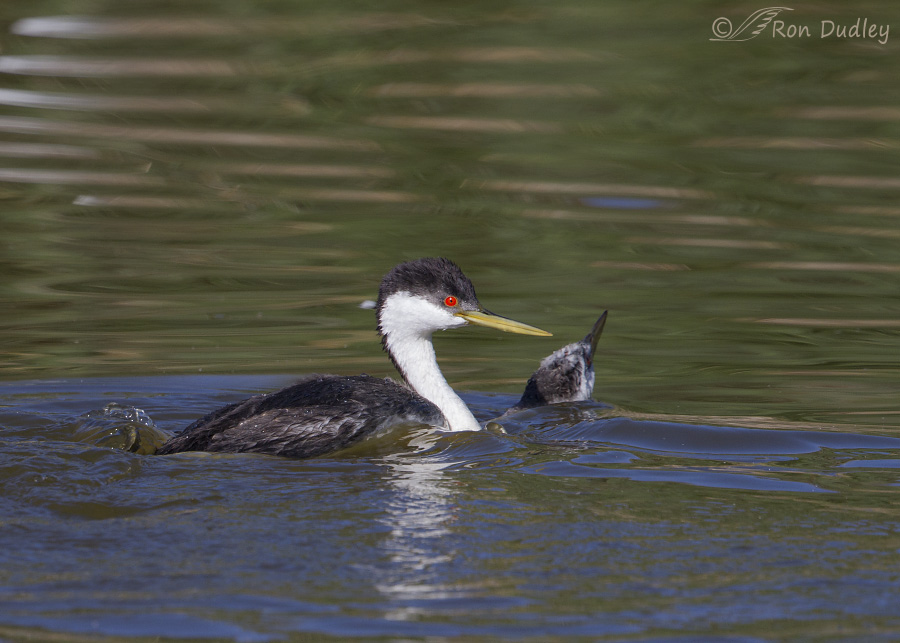
1/2000, f/6.3, ISO 400, Canon 7D, Canon EF 500mm f/4L IS II USM + 1.4 tc, not baited, set up or called in
The weight of the very large young bird forced the adult underwater, except for its head and neck. What appears to be the body of the adult is really that of the juvenile.
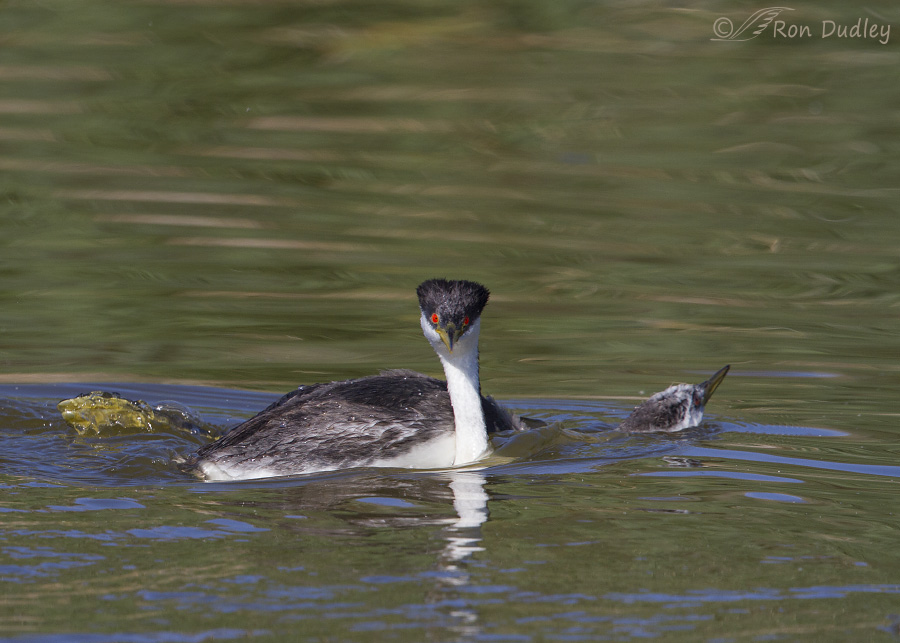
1/2000, f/6.3, ISO 400, Canon 7D, Canon EF 500mm f/4L IS II USM + 1.4 tc, not baited, set up or called in
But the adult was having none of it – this youngster is just too damned big for back-brooding. Here we see the foot of the adult (juveniles have darker feet) being used to…
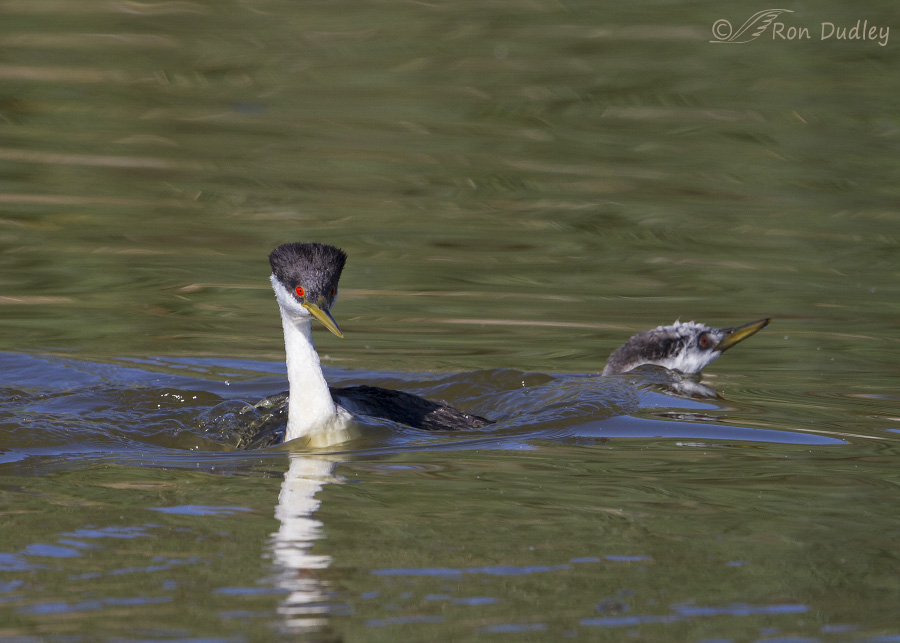
1/2000, f/6.3, ISO 400, Canon 7D, Canon EF 500mm f/4L IS II USM + 1.4 tc, not baited, set up or called in
make a quick turn to the adult’s right, which forced the juvenile off its back and dumped the young bird back into the water. At this point the youngster gave up and continued to swim away.
I can only believe that this was an attempt by the juvenile to be back-brooded long after it was appropriate or even possible. I’ve spent hundreds of hours watching back-brooding grebes and there were several aspects of this behavior that were new to me.
- I’ve never seen a juvenile this large attempt to climb onto the back of its parent.
- In my experience chicks always climb on board from the rear of the parent (sometimes using the deliberately outstretched foot and leg of the parent as a ‘ladder’). This sneaky approach to boarding was new to me.
- When they’ve had enough of their passengers, parent grebes usually dump their chicks back into the water by raising up vertically and flapping their wings. I thought this quick change of direction by the adult was a novel but effective way of dumping the unwanted hitchhiker back into the drink.
This was a completely unexpected behavior that was fun to watch and document with photos. You just never know what you might see if you spend enough time with birds and you pay attention.
Optical illusions can be both transitory and selective in who they work for, so you may or may not have been fooled by the first photo. But I sure was.
Ron


It had me fooled! Thanks for this great series. I love hearing that the parents normally create a foot ladder for true little ones getting on board.
Pat, that bit about the foot ladder is pretty common but you have to watch carefully for it because the foot is often a little under the surface and difficult to see.
I didn’t see the illusion. Which is unusual for me. Love that the youngster was evicted – and don’t all parents i\out of necessity learn sneaky manoevres to deal with their children?
“don’t all parents i\out of necessity learn sneaky manoevres to deal with their children?”
I’m sure most do, EC. But there are some that are completely clueless, about their own children and a lot of other things too.
Absolutely fascinating! Good for you for getting these remarkable photos and sharing. Thank You.
You never disappoint.
Kaye
What a neat series! Thank you so much for reworking and reposting this. Totally fooled me!
“Totally fooled me!”
You have lots of company, Carolyn. Including yours truly.
Love the full face shot of the adult – full annoyance! Great breakdown of the illusion Ron and very interesting behavior!
Thank you, Kathleen.
Due to your explanation, I’m no longer an April fool. But at first I was!
” I’m no longer an April fool.”
Good, Kent. Making progress… 🙂
I was definitely fooled! How long did all this take? I would guess less than half a minute before the adult became exasperated?
“How long did all this take?”
Cheryl, at the burst rate of my 7D (10 frames per second)
it only took a couple of seconds from beginning to end. With action like this, if I did pause between shots it would only have been for a very short time.
“Kiddo, you’re too big for a piggy-back (grebey-back?) ride!”
Ron, I figure that you want the April Foolery to continue. 🥳😉 You definitely got me — it took a very close look and enbiggening the image to see what was actually going on in that first shot. 😂
Good to know you were fooled, Marty. Puts me in good company…
Very interesting. If you only showed the first photo without commentary I would have assumed that it is as your first stated and never would have thought anything more about it.
Thanks, Everett.
TOO funny! 🙂 Figured it out before reading the truth of the matter but had you not said to “look” I would have had it wrong also. 😉 It is rather strange that a VERY large juvenile would try to hitch a ride.
Judy, I thought about not telling readers to “look” and not spring the surprise until the very end. But that kind of presentation got a little complicated to do well.
Great series, Ron! A good example of continue to question what you think you see or know.
Thanks Brett.
These “moves” were fascinating– the juvenile was certainly determined to continue freeloading, it it could manage to maneuver
on board !
I’m glad you enjoyed the “moves”, Kris. Thanks.